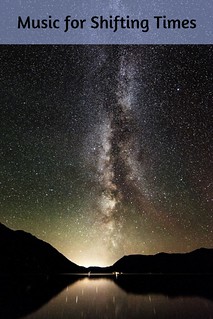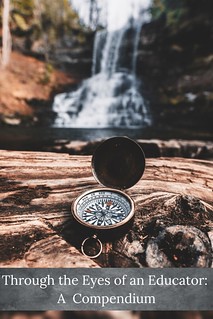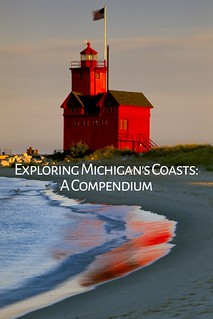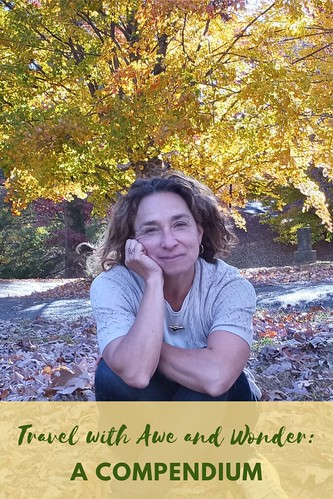Seeking Solace
Church ruins are hallowed places. A quest to find the old bricks and stones recently added depth to our snow birding experience in South Carolina. Armed with maps and a book, "Day Trips from Charleston" by William Baldwin, we wandered the back roads surrounding Charleston, most often the solitary car on those roads. In the lesser known villages and small towns, we also found ancient churches still offering peace and comfort to current congregations as well as to the visitor.
Arm yourself with a good map and GPS and head south of Charleston first to search for the picturesque and the hallowed places.
If it weren't for the towering live oaks and cascading Spanish moss, you might think you were looking at Greek ruins. Instead you're viewing the remains of Sheldon Church, built in 1751. Once rivaling Charleston's St. Phillips for beauty, it was burned by the British in 1779. Restored to a useful building for a time, General Sherman's use of it as a stable and subsequent burning left the shambles we see today. Find this spot where once 60-70 carriages brought worshippers, on Old Sheldon Church Road, S-7-21 off U.S. 17, about 51 miles south of Charleston.
After returning to U.S. 17, turn south on U.S. 21 to tour the magical town of Beaufort. At 501 Church Street, you will find St. Helena's Episcopal Church, built about 1724, stands whole and still in use. During the Civil War, this church became a hospital. Tombstones were brought in and used as operating tables.
Bluffton, a sleepy village dripping silvery moss and Southern charm, is home to the Church of the Cross situated on the bluff overlooking the river. This building is home to a still active congregation. Built in the Carpenter Gothic style in 1857, it is a large cruciform with rose-colored windows. The setting is exquisite and was the scene of a wedding on the day of our visit.
Church of the Cross 1857, Bluffton
You will want to visit Walterboro on U.S. 17 and wander its streets with a walking tour pamphlet from the Visitor's Bureau. It takes you past historic churches, beautiful low country homes, and fragrant flowers. Francis Marion, the Swamp Fox, roamed the area nearby. You'll find markers describing the Battle of Parkers Ferry where Marion beat the British shortly before their surrender at Yorktown. No doubt Marion passed the Pon Pon Chapel of Ease on his travels through the woods. Built in 1753, this Anglican chapel is still known as "the Burnt Church" from a fire some time after 1796. The graceful arched windows and Jacobean gables have been restored, reminders of the grand building it must have been. John Wesley, founder of Methodism, preached at the original wooden chapel at this site in 1737. From U.S. 17A, turn on S.C. 64 East, turn left on to dirt road S-15-705. Continue just past the intersection of S-15-40. Pon Pon Chapel is on the right.
Pon Pon Chapel
Traveling north of Charleston towards picturesque Georgetown, turn left on to Rutledge Road, S-10-857 and then bump along Old Georgetown-Charleston Road, S-10-1335 to discover the well-hidden gem of the St. James-Santee Church, c. 1768. Note this road may not be passable in wet weather. This French-Huguenot congregation erected classical porticoes on each end of the building, providing separate entry ways for the English and the French. Services are still held here once a year. Be sure to visit the Hampton Plantation State Park which is nearby.
St. James Santee 1768
In charming Georgetown, two churches on Broad Street should not be missed. Both are still viable and serve the community. The Prince George-Winyah Episcopal Church, built in 1753, survived the British burning it after they used it for a stable. A stroll through the churchyard finds stones dating back to 1767.
Prince George-Winyah 1753, Georgetown
Freed slaves organized the Bethel African Methodist Church in 1865 and built the current building on the opposite side of Broad Street in 1882. The tram tour guide showed us inside the building to see the unique tin ceiling and told us that Michelle Obama's grandfather and father had belonged to this church before relocating to Illinois.
"Seek and ye shall find," says the Bible, and in our wanderings through South Carolina byways, seeking out historic churches and the ruins of others, we found solace in the sacred spaces and shared a communion with those from other times.
If you want to experience the beauty of downtown Charleston's historic churches, see www.churchesofcharleston.smugmug.com
Reference:
Baldwin, William P. "Lowcountry Day Trips,Plantations, Gardens, and a Natural History of the Charleston Region.” Greensboro, N.C.: Legacy Publications, 1993.
Betty Jo Riggs is the Retiree Travels Co-Editor at Wandering Educators
All photos courtesy and copyright BJ Riggs























Carol Voigts
beautiful pictures of what must be some of the oldest churches in America. It would be worth it to do some plein aire painting of these structures. I'm sure many have already done it. thanks for a lovely article bringing these to light!
Carol Voigts --RETIRED!!!